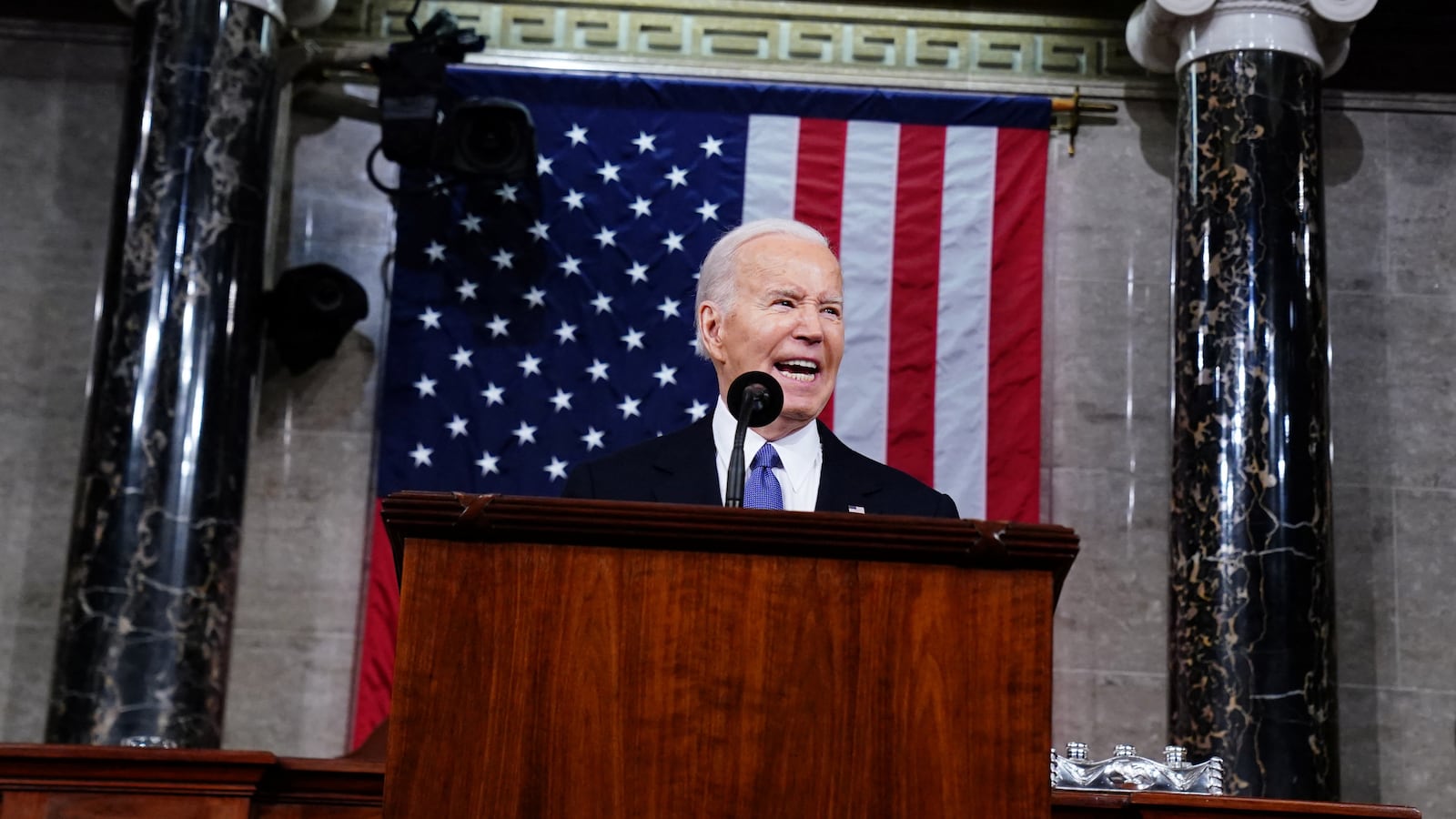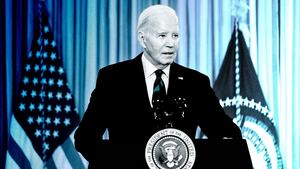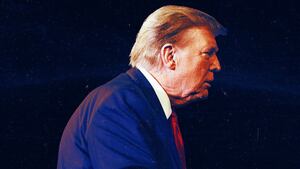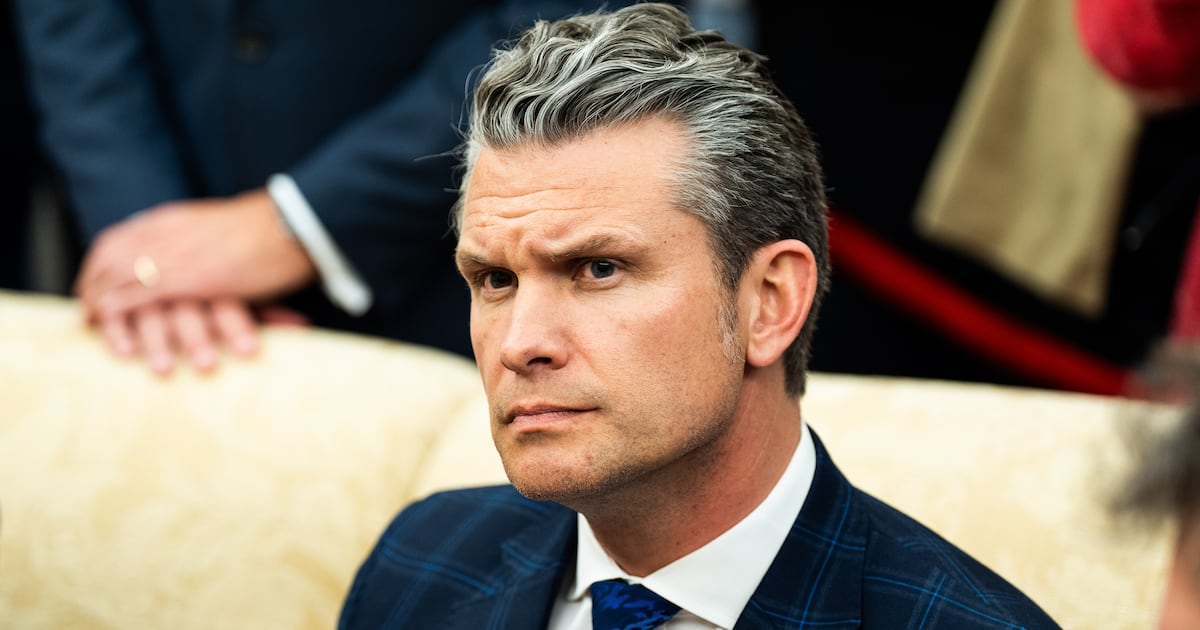The state of Joe Biden’s re-election is not strong. Maybe a fiery speech making the case for another four years would help?
Honestly, I can’t recall a State of the Union speech that was more overtly political or combative than the one Joe Biden delivered on Thursday night. This is not a criticism. This was far more entertaining and relevant than a typical SOTU address.
As journalist David Mark noted early on, “This isn’t a Bill Clinton-style SOTU laundry list of granular policy initiatives.” True, Clinton was the most egregious, but this formula was standard operating procedure for most presidents. After all, how can you argue with someone who gets up on stage for an hour or so and promises to give you lots of free stuff?
Although he eventually turned to that template (they always do), pledging to give public school teachers a raise and to “end cancer as we know it,” etc., Biden opened with what was essentially a campaign speech—a rousing argument for his re-election, as well as a vision that was a clear contrast with anything espoused by Donald Trump. (Although he never mentioned Trump’s name during his prepared speech, Biden said “my predecessor” thirteen times.)
Biden began by addressing the issue of freedom and democracy—at home and abroad. He invoked Ronald Reagan’s classic line telling Mr. Gorbachev to “tear down this wall,” and he juxtaposed it with Donald Trump telling Putin to “do whatever the hell you want” [to NATO countries who don’t pay their dues]. And he challenged Congress to stand up to Putin.
Next, he turned to Jan. 6. Regarding the J6 rioters, he declared: “You can’t love your country only when you win.”
These early topics might have inspired some of the Nikki Haley voters that Biden has invited into his cause.
Then, it was time for base mobilization. That is to say, he discussed abortion and even promised to restore Roe v. Wade as law of the land if he was re-elected.
He shifted to the fact that he came to office during the COVID-19 pandemic, mainly to “tell the story” of “America’s comeback.” In other words, Biden needed an excuse to craft the narrative of his economy (“turning setback into comeback”).
There is no doubt that the economy is one of Biden’s biggest vulnerabilities. People have a visceral sense that Biden’s term has hurt them, mostly due to inflation and the cost of living—groceries that cost too much.
For a long time now, Biden’s team has attempted to cite economic data such as the unemployment rate to prove that the economy is turning around. The frustrating thing is that while many economic indicators look good right now, Biden is getting zero credit. On Thursday night, he attempted to shift the narrative in a different way.
Unlike former President Bill Clinton, Biden does not have the ability to make viewers believe he feels their pain, but he does have the potential to channel a sort of populist “Scranton Joe” image. He tapped into these kitchen table issues by attacking corporations, price gouging, junk fees, and “shrinkflation.”
Of course, the economy wasn’t the only deficiency Biden needed to address and overcome.
Coming into Thursday night’s speech, I spent some time contemplating what would make it a success or a failure. The criteria I came up with boiled down to two categories: What he would say—and how he would say it.
The most important criteria was the latter. It was also the most superficial: How did he look? Did he seem energetic and vigorous? Or did he seem old and slow and stiff?
For Biden—an important caveat—he seemed sharp. He was a bit shouty—which is much better than the whispering Joe alternative—but he was passionate and energetic (again, there is a low bar for Biden, but he was able to hurdle it).
Much attention is being paid to Biden’s cognitive ability, so a gaffe or even a sleepy performance could have been deadly. In this regard, age is the ultimate campaign issue. On Thursday night, Biden sought to defuse these concerns with humor. During his closing remarks, he quipped, “I know it may not look like it, but I’ve been around a while.”
Of course, these self-effacing lines only work if the person delivering the joke demonstrates competence and energy. Whether it was the cheering crowd, the caffeine, or the adrenaline (or something stronger), Biden showed flashes of his younger self while under the national spotlight.
I was also watching for how effectively Biden would navigate being heckled by Republicans. Here, I think Biden had mixed success. At times, he seemed to relish the fight and even deliver some effective ad libs. Indeed, he trolled Republicans multiple times, including mocking them for killing the border bill. But he also failed to deliver the kind of moment that made last year’s address memorable.
Coming into the speech, it was also clear that Biden would have to address the war in Gaza, which has turned into something of a wedge issue within the Democratic Party. Prior to the speech, protesters calling for a Gaza ceasefire blocked a street near the Capitol.
Biden attempted to thread the needle by saying he wants a ceasefire “to get all the hostages home.” He also said he wants a temporary pier constructed in the Mediterranean for humanitarian purposes, but emphasized that “no U.S. boots will be on the ground.”
Will it happen? Will it work? And will it be enough to pacify Arab Americans and progressives, without alienating friends of Israel?
The truth is that these speeches are often perfunctory and the results are fleeting. The pace of our modern news cycles makes this even more true. Yet, our fractured media landscape means there are only a few occasions when tens of millions of Americans will hear the president speak.
With just a 38 percent approval rating, Biden has to fight for every inch of support, and he has to begin turning things around. While Biden has a long way to go if he wants to earn re-election in November, Thursday night might be the first step in a journey of a thousand miles.








